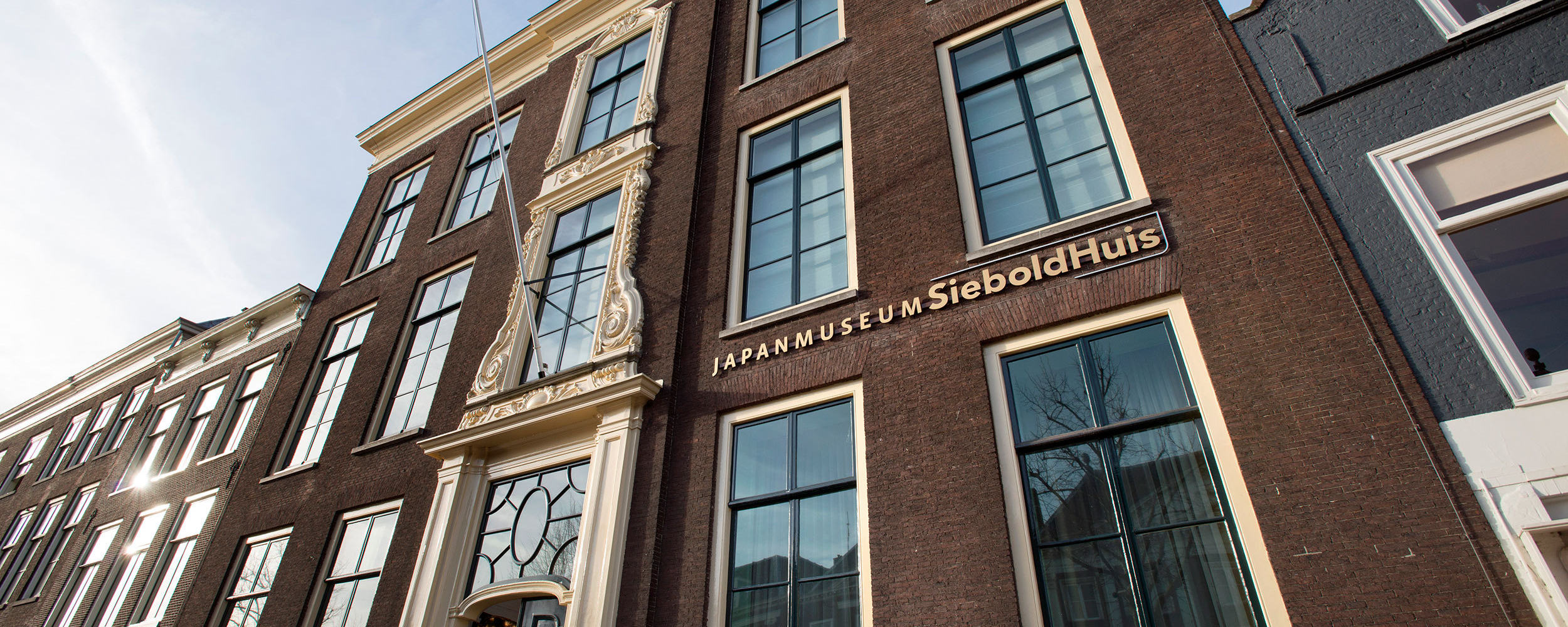Japan Museum SieboldHuis

To further express the long and historically unique ties between the Netherlands and Japan, in 1999 the SieboldHuis Foundation was established. The aim of this foundation was to reopen the SieboldHuis as a museum to house the collection that Siebold himself had once exhibited here. Franz Philipp von Siebold (1796-1866) lived in this house and displayed his collection of Japanese objects and artefacts to a captivated public. Today, after more than 150 years, his former residence is now the first official Japan centre in the Netherlands.
The return of the SieboldHuis in 2005 was generously supported by the Japanese and Dutch Governments, corporate commitment from both countries as well as the JCC (Japanese Chamber of Commerce and Industry) and the city of Leiden.
The Wereld Museum Leiden (former National Museum of Ethnology) and Naturalis (the National Museum of Natural History) both participate(d) in the realization and conservation of the SieboldHuis museum on the basis of their leading Japanese collections. The 19th century Japanese objects in these two museums are unique.
Leiden University cooperates closely with the SieboldHuis and has strong ties with Japan. The university has a Japanese language and culture department and in addition houses important Japanese collections at several academic institutions. The majority of these collections were originally brought to Leiden by Siebold or were compiled by him later.
The ethnographic objects in Japan Museum SieboldHuis all come from the Wereldmuseum Leiden. The collection from this museum has been digitalized and is on its website.
The Flora and Fauna objects are from the Naturalis Biodiversity Center. This (national) collection has grown to over 40 million objects and forms the basis for worldwide research on biodiversity and geology. The Naturalis collection is one of the top 5 natural history collections in the world. This collection is also available online.
Mission statement
The aim of Japan Museum SieboldHuis ’Stichting Japanmuseum SieboldHuis’ is to exhibit (museum) collections relevant to Japanese art, culture, science and nature, in particular the Leiden Siebold Collection, as well as to strengthen the ties between the Netherlands and Japan and to promote Japan Museum SieboldHuis as museum and information centre.
Japan Museum SieboldHuis is a registered museum. The museum adheres to the code of Ethics as stipulated by ICOM.
Japan Museum Sieboldhuis is a public institute with a public function. We uphold and apply the Governance Code Cultuur. Our public function determines our primary activities as well as our revenue model.
Japan Museum SieboldHuis has ties with :
- Siebold Museum, Würzburg, Germany
- Siebold Memorial Museum, Nagasaki, Japan
- Dejima, Nagasaki, Japan
- Tsuyama Archives of Western Learning, Tsuyama, Japan
- Mogami Tokunai Memorial Museum, Murayama, Japan
- Tikotin Museum of Japanese Art, Haifa, Israel
Present
In this historic Dutch town house located on the Rapenburg, other parties besides Japan Museum SieboldHuis are established.
- Hotei Japanese Prints
Hotei Japanese Prints is a gallery and art shop on the first floor of the museum. Besides Japanese prints, scrolls and books, Hotei has ceramic objects, bronze vase, cloisonné and lacquer for sale.
- Liaison Office Universiteit of Nagasaki
On the third floor of the museum the University of Nagasaki has a Liaison Office.
Past
The building at number 19 Rapenburg consists of four 15th century houses that were combined into one residence in the early 16th century.
The earliest known resident was Paulus Buys (1531-1594) who played an important role in the Eighty Years’ War. He was Pensionary of Leiden and a close friend of William of Orange. He also was a member of the Council of State and Rijland Water Board and curator of Leiden University. In those days Paulus Buys was one of the 18 richest people in the City of Leiden.
After Buys the house was occupied by wealthy Flemish merchants such as Daniël van der Meulen (1554-1600) who was involved in the construction of the new town hall in Leiden and who also was a friend of William of Orange.
After this period the Paets family resided in the house. Three generations of this prominent family lived here and all were somehow involved in local politics. Mayor Willem Paets (1596-1669) ordered the construction of the classicistic rear aspect of the house, which is believed to have been designed by Arent van 's Gravensande who also designed the Lakenhal in Leiden (now housing the Leiden Municipal Museum).
Wealthy merchant Johannes van Bergen van der Grijp (1713-1784), former head administrator for the Dutch government in Batavia was responsible for the renovation of the facade of the building (Rapenburg side). The house itself needed to be radically renovated and major changes were made to the basement and front steps.
The beautiful ceiling in the great hall was designed by James Wyatt (1748-1813), a celebrated English architect. Designs by Wyatt are rarely found outside the United Kingdom. Proof of the authenticity of the work can be found in a correspondence between Wyatt and Johannes Meerman (1753-1815) who lived in the house for a short period.
The next owner of the building let it out to Ph.F.B. Von Siebold (1796-1866) who actually did not live in the house very long. He bought the house and used it to exhibit his collection of Japanese objects. He alternately lived in his Nippon home at Lage Rijndijk in Leiden and in Germany. From 1837 to 1844 he let out the Rapenburg house to student society Minerva. In 1844 Siebold's German colleague, professor Caspar George Carel Reinwardt (1773-1854), rented the building.
The last private owner of the house was Petrus de Raadt (1796-1862), founder of the Noorthey institute in Voorschoten. After his death the building came to the Dutch government and until 2000 it housed the district court and magistrates' court.
In 2000 the building was refitted as a museum for seven months for the commemoration of 400 years of Dutch-Japanese relations.
The building was renovated to restore it to its former glory and in 2005 Japan Museum SieboldHuis opened its doors to the public.

